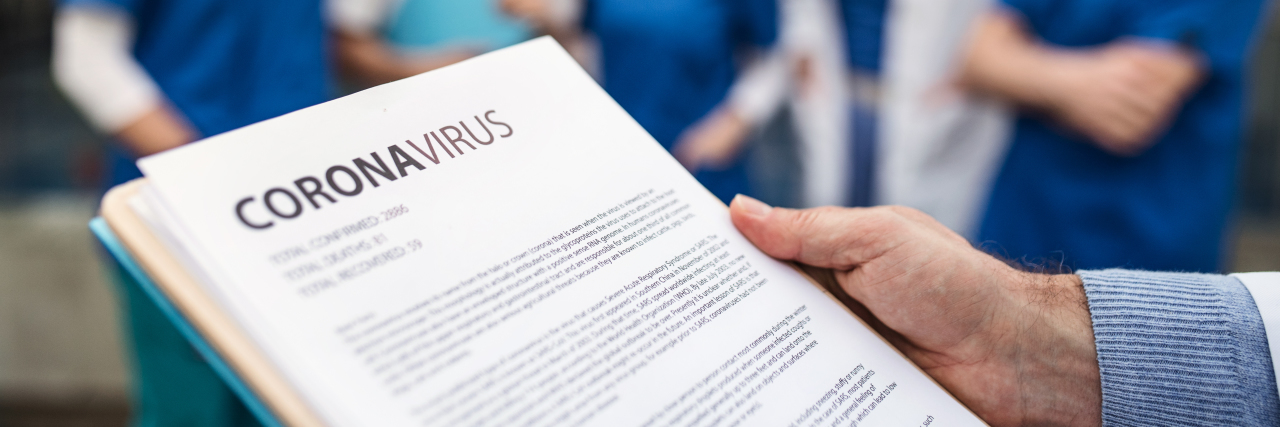The Problem With the Way Officials Are Categorizing COVID-19 Deaths
Editor's Note
Join The Mighty’s Coronavirus group to connect with other Mighties living through the pandemic. Read the latest updates, share helpful tips, or give and receive virtual support.
As I’ve watched the daily press briefings given by my state officials, it strikes me how they discuss COVID-19 deaths. They will list the age, gender, and county of the person who passed away before adding that one all-important phrase, “with underlying health conditions.” On the surface, at a public health level, that may seem like important information to include. But that label divides the population into two groups: those with pre-existing health conditions and those without.
It’s psychologically painful to feel an ongoing sense of risk. People are not used to this level of discussion and disruption around health. It’s easier to choose to believe that we are not actually at risk, that everything will be fine for us. The media’s emphasis on how the people who died had preexisting conditions subconsciously reassures people without preexisting conditions that they are not at risk. It separates people into two tiers (“healthy” vs. not), and deaths from one of those tiers are now becoming viewed as expected and even acceptable.
One man recently told my husband that he would be OK with one to two million deaths in the US from this virus, as long as the economy could have stayed “open.” What is the unspoken message of that belief? He is OK with that number of deaths because they would most likely be from vulnerable populations: elderly people, chronically ill people, and people with disabilities.
This current pandemic has led to many discussions around the Spanish Flu outbreak of 100 years ago, in which many children and young adults died. Lately, people who are against stay-at-home orders, mask usage, and social distancing will bring up that fact to show that the 1918 outbreak was different from today’s outbreak because so many “young, healthy people” died. That differentiation is showing their true beliefs about the value of vulnerable populations, not only including the elderly (15 percent risk of dying from COVID-19) but also people with disabilities (close to 10 percent risk of dying from COVID-19).
Are their deaths without meaning because of their preexisting conditions, whether age or disability? This is what people are implying, whether consciously or unconsciously, when they constantly reiterate, “But almost everyone who died had underlying health conditions.”
This is where advocacy comes into play: don’t let people in your life get away with saying that.
Challenge them: is massive loss of life acceptable to you as long as the deaths come from vulnerable population groups? Why are their lives not valuable to you?
On a personal level, don’t allow yourself to fall into the easy trap of feeling “safe” just because you may not be at risk of death from this virus. Every time you read a report of someone who died from COVID-19 with “preexisting health conditions,” please pay homage to them by recognizing them in your mind as someone who loved and was loved, who had hobbies and joys and things in their life they looked forward to, same as you. Honor them through your acknowledgment.
While not everyone may have an underlying condition in the form of a disability, if we are fortunate, we will all grow old someday. When that day comes, I can only hope that others will view my life and passing with respect as well. Every life is deserving of protection and respect.
For more on the coronavirus, check out the following stories from our community:
- The Problem With Saying ‘Only’ the Elderly and Immunocompromised Will Be Affected by COVID-19
- If I Get COVID-19 It Might Be Ableism – Not the Virus – That Kills Me
- How America’s COVID-19 Response Is Exposing Systemic Ableism
- Why I’m Worried About Rationing If My Child With Down Syndrome Gets COVID-19
- I’m Autistic and This CDC Equation Says My Life Is Less Valuable If I Get COVID-19
Getty image by Halfpoint.

